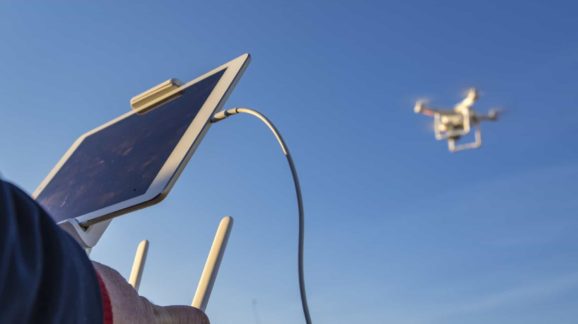Worst Procedural Abuses of the Obama Era: Good Cause, Bad Faith

Editor’s note: Open Market is publishing a new blog series this week on pressing issues in administrative law and regulatory policy. Today kicks off the series, which we’ve titled “Worst Procedural Abuses of the Obama Era,” and will include contributions by Marc Scribner (below), Trey Kovacs, William Yeatman, and Ryan Radia.
 For the past seven decades, most federal agency actions have been required to comport with the Administrative Procedure Act (APA). The APA lays out the basic processes required of agencies in order to promulgate a regulation. A key element is the requirement that rules first be proposed and then open to public scrutiny, referred to as “notice and comment.” The agency must then consider public comments relevant to the proposed rule under consideration before publishing their final rule.
For the past seven decades, most federal agency actions have been required to comport with the Administrative Procedure Act (APA). The APA lays out the basic processes required of agencies in order to promulgate a regulation. A key element is the requirement that rules first be proposed and then open to public scrutiny, referred to as “notice and comment.” The agency must then consider public comments relevant to the proposed rule under consideration before publishing their final rule.
There are a few exceptions. A major one is known as the “good cause exception” (5 U.S.C. § 553 (b)(3)(B)). It states that “when the agency for good cause finds (and incorporates the finding and a brief statement of reasons therefor in the rules issued) that notice and public procedure thereon are impracticable, unnecessary, or contrary to the public interest,” it is not required to comply with the basic APA requirement that a “[g]eneral notice of proposed rulemaking shall be published in the Federal Register.”
Instead, the agency can immediately bring a rule into force without any notice and comment through what is known as an interim final rule (IFR). An agency may publish an IFR if they successfully invoke any or all of the three prongs of the good cause exception: impracticability, unnecessity, and contrary to the public interest.
The Senate Judiciary Committee’s 1945 report on the APA can shed some light on the meaning of the good cause exception’s three prongs (p. 200):
“Impracticable” means a situation in which the due and required execution of the agency functions would be unavoidably prevented by its undertaking public rule-making proceedings.
“Unnecessary” means unnecessary so far as the public is concerned, as would be the case if a minor or merely technical amendment in which the public is not particularly interested were involved.
“Public interest” supplements the terms “impracticable” or “unnecessary”; it requires that public rule-making procedures shall not prevent an agency from operating and that, on the other hand, lack of public interest in rule making warrants an agency to dispense with public procedure.
The report also noted that although agencies in certain limited circumstances must have the ability to dispense with normal rulemaking procedures, “[t]he exemption of situations of emergency or necessity is not an ‘escape clause’ in the sense that any agency has discretion to disregard its terms or facts.”
Unfortunately, agencies have not taken to heart the “good cause is not an escape clause” mantra from the APA’s congressional architects. A recent example of good cause abuse can be found within the Federal Aviation Administration (FAA).
In December 2015, FAA issued an IFR requiring the registration of all small unmanned aircraft systems (UAS), commonly called drones, that weigh more than 0.55 lbs (CEI comments here). FAA claimed that the growing volume of small UAS in the U.S. posed an imminent safety hazard. Never mind that many of the small UAS covered by the IFR are harmless toys. Never mind that most have battery lives of less than 20 minutes. Never mind that most are made with lightweight materials such as plastic and foam that pose few hazards even in catastrophic failure. And never mind that most cannot fly more than a few hundred yards from their operators.
In issuing its IFR, FAA invoked the APA’s impracticability and public interest prongs of the good cause exception. CEI pointed out in comments to the agency that this emergency rulemaking was unlawful and a naked power-grab on the part of FAA, against both the letter and the spirit of the APA’s good cause exception. FAA argued that failing to immediately require small UAS registration would pose unacceptable safety risks, contrary to the public interest that it carry out its mission to “prescribe[e] regulations and minimum standards for other practices, methods, and procedure the Administrator finds necessary for safety in air commerce and national security” (49 U.S.C. § 44701(a)(5)).
But as we noted, FAA presented no evidence of this. In fact, one can reasonably infer from reports cataloged in FAA’s bird strike database that small UAS, especially those under 4.4 lbs (often called “micro UAS”), would not pose significant safety risks to other aircraft, as well as people and property on the ground. Eli Dourado of the Mercatus Center at George Mason University has done an excellent job presenting this case.
As for the impracticability prong of the good cause exception invoked by FAA, in which it argues that “it would be impracticable to require all small unmanned aircraft owners to use [the Part 47 paper aircraft registration] system and that a stream-lined, web-based alternative is necessary to accommodate this population and ensure operations may commence in a safe and timely manner,” FAA also fails to meet the high bar required to justify emergency rulemaking.
FAA essentially claims that because it suddenly decided to require the registration of all UAS by rushing the promulgation of these rules, which would overwhelm the traditional paper aircraft registration process, it must immediately establish the new electronic aircraft registration process to accommodate UAS. This alleged impracticability exists only because FAA decided to recklessly promulgate this unlawful IFR in the first place, long after the growth of the model aircraft market was reasonably foreseeable (and indeed foreseen by Congress and the agency).
To date, the small UAS registration IFR stands. But there is hope. Maryland attorney John Taylor filed a lawsuit that will challenge the rule on a number of grounds, including FAA’s bad faith invocation of the APA’s good cause exception. We wish him the best of luck. If Taylor prevails, the good cause exception may be returned its rightful place as intended by the APA’s congressional architects 70 years ago.